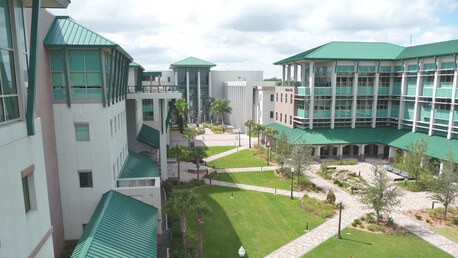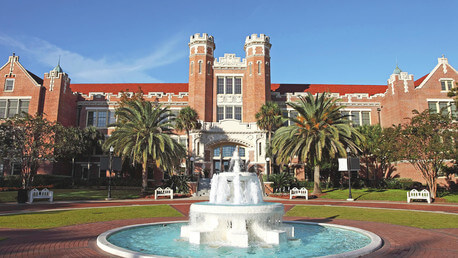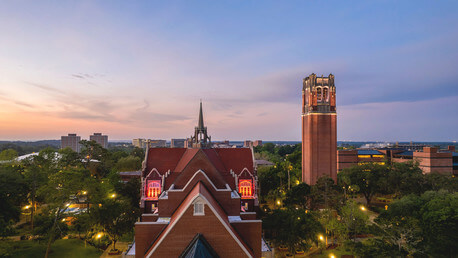Tuition, Cost & Aid
Affordability and Cost
Average Net Price Average net price for full-time, first-time degree/certificate-seeking undergraduates paying the in-state or in-district tuition rate who were awarded grant or scholarship aid from federal, state or local governments, or the institution. Other sources of grant aid are excluded. Aid awarded anytime during the full aid year is included.
Average net price is generated by subtracting the average amount of federal, state or local government, or institutional grant and scholarship aid from the total cost of attendance. Total cost of attendance is the sum of published tuition and required fees (lower of in-district or in-state), books and supplies and the weighted average room and board and other expenses.
Average net price is generated by subtracting the average amount of federal, state or local government, or institutional grant and scholarship aid from the total cost of attendance. Total cost of attendance is the sum of published tuition and required fees (lower of in-district or in-state), books and supplies and the weighted average room and board and other expenses.
$11,420
Average Net Price By Family Income
Tuition
| In-State Tuition In-state tuition is the tuition charged by institutions to those students who meet the state's or institution's residency requirements. In-district tuition is the tuition charged by the institution to those students residing in the locality in which they attend school and may be a lower rate than in-state tuition if offered by the institution. | $2,563 |
| Out-of-State Tuition Out-of-state tuition is the tuition charged by institutions to those students who do not meet the state's or institution's residency requirements. Out-of-district tuition is the tuition charged by the institution to those students not residing in the locality in which they attend school. | $9,189 |
Additional Costs
Room and Board The weighted average for room and board and other expenses is generated as follows:
| $10,008 |
| Books and Supplies | $783 |
| Tuition Payment Plan | Yes |
Financial Aid: visit page
Financial Aid Email: financial.aid@sfcollege.edu
Aid & Grants
Students Receiving Gift Aid Percent of undergraduate students awarded federal gift aid. Federal gift aid includes any grant or scholarship aid awarded, from the federal government, a state or local government, the institution, and other sources known by the institution. Students Receiving Grants Percent of undergraduate students awarded grant aid. Grant aid includes any grant or scholarship aid awarded, from the federal government, a state or local government, the institution, and other sources known by the institution. Students receiving state aid Students receiving federal aid
27%
Average Aid Per Year
$2,426
27%
Average Federal Grant Aid Per Year
$2,129
Average Institution Grant Aid Per Year
$2,082
29%
Average State Grant Aid Per Year
$1,305
61%
Average Federal Grant Aid Per Year
$2,129
Student Loans
Students Borrowing Loans Loans to students - Any monies that must be repaid to the lending institution for which the student is the designated borrower. Includes all Title IV subsidized and unsubsidized loans and all institutionally- and privately-sponsored loans. Does not include PLUS and other loans made directly to parents.
14%
Average Loan Amount Per Year
$2,333
Students receiving federal loans
14%
Average Federal Loans Per Year
$2,152
Average Other Loans Per Year
$4,775
Average Debt at Graduation The median federal debt of undergraduate borrowers who graduated. This figure includes only federal loans; it excludes private student loans and Parent PLUS loans.
$7,150
Loan Default Rate
19%
US National: 7%
Median Monthly Loan Payment The median monthly loan payment for student borrowers who completed, if it were repaid over 10 years at a 5.05% interest rate.
$114
What Students Are Saying
It is not that expensive and not a private school so Bright Futures pays 100% tuition, and the teachers always try to choose the cheapest text books for the students.
Crystal from Florahome, FL
Although it is not a University, there are programs here where you can earn a Bachelor's degree, and of course it's much cheaper. There is a food bank that gives food out every Wed. there is also a vegetable garden where they provide the products for you all you have to do is take care of your garden. Every so often there are events where they have free food and all you have to do is fill out a small survey. So there are MANY opportunites where you can save on food.
Genesis from Gainesville, FL
The classes are cheaper than most colleges, and it allows you to get through the grueling generic classes with ease. Since they've switched to a regular college, the prices have risen slightly, but not so much that you'll need to penny pinch for awhile.
Beth from Keystone Heights, FL
Cheaper. I'm planning to transfer to UF in three years and I've already saved so much money. I'm transferring for my bachelors in Zoology but I'm doing a dual enrollement of sorts because I'm still going to be in Santa Fe working on my AS in technical zoology at the zoo. Im going to be saving so much money!
Arelis from Apopka, FL
As I told you, Santa Fe is everything you expect to be, this also includes the monetary part. I am sure every one in the college is happy and in peace because of what they pay and what they gain because of that.
Juan from Gainesville, FL
All of my professors have gone above and beyond to give me bang for my buck.
Blake from Hobe Sound, FL
When it come to cost, especially for a Bachelor's Degree, the cost compared to a University is great. In state it is $330 plus lab fee of $30. This for in state students only. I am not real sure about out of state, but I know it is more.
Debra from Dunnellon, FL
Small Class sizes, Professors who care, and courses that matter and degrees for me all a great slogan and is not a lie
Travis from Ocklawaha, FL
Santa Fe College is a college that understands that college students are there to make it! They wont nickle and dime you!
Kendriana from Gainesville, FL












